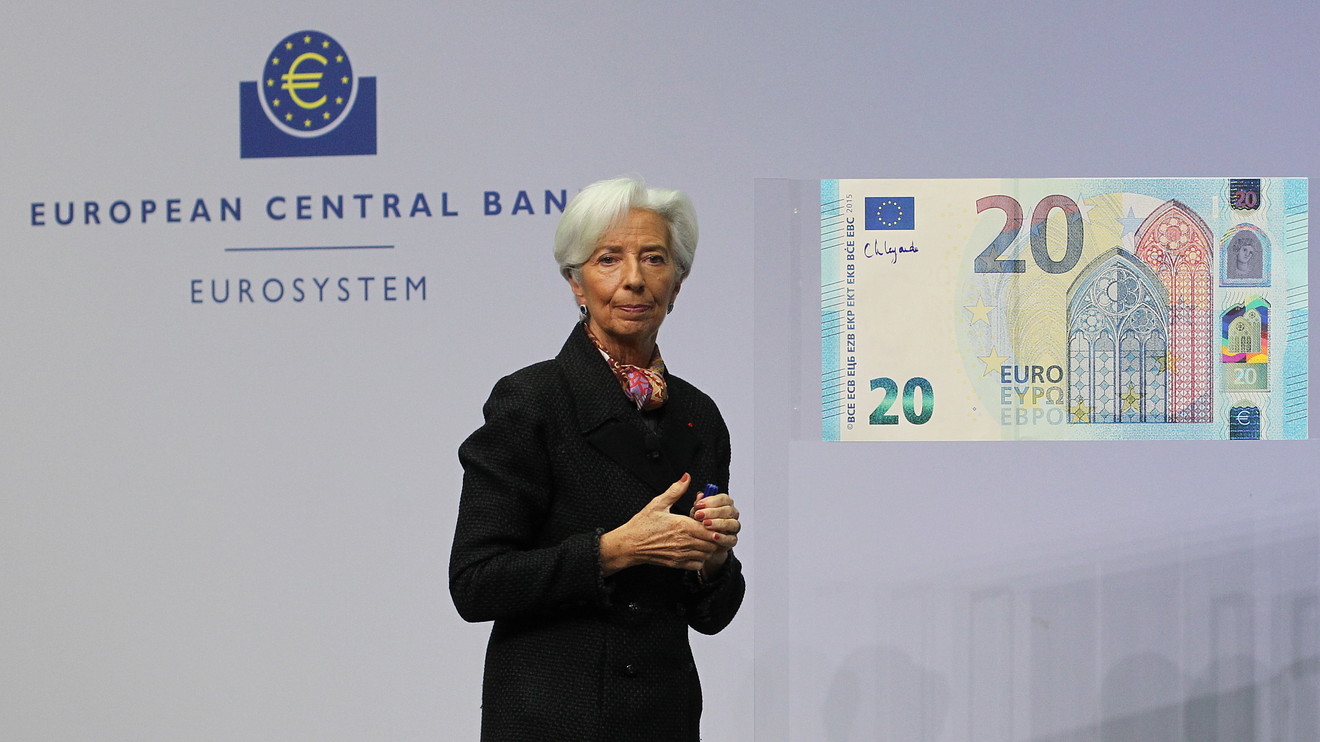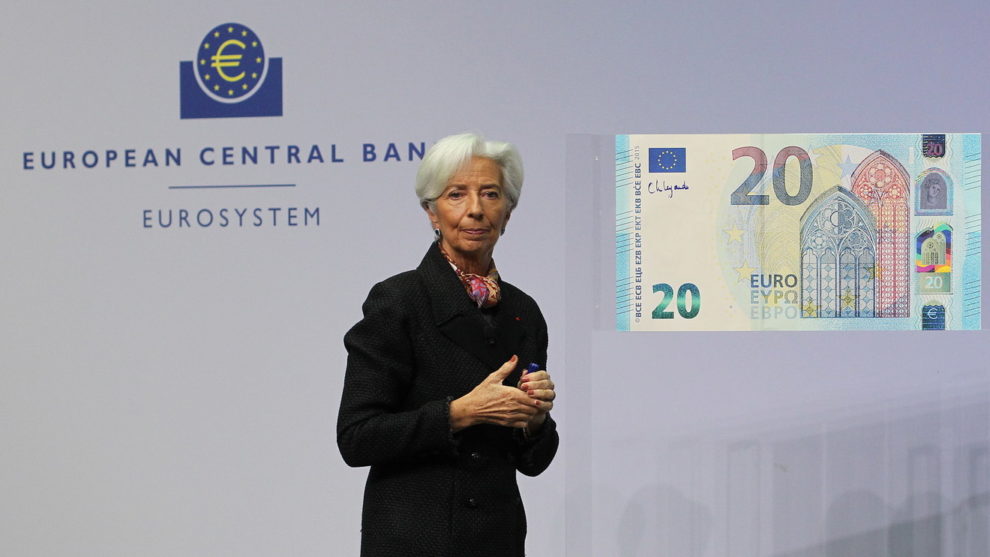
The European Central Bank might not have much room to maneuver, but expectations are running high that it will move to substantially ease monetary policy on Thursday in a meeting coming a day after an emergency interest rate cut by the Bank of England and in the wake of the Federal Reserve’s surprise cut last week.
“Following today’s emergency BOE policy announcement, it would be absurd, and economically harmful, if the ECB provided only modest new stimulus tomorrow,” wrote economists at Daiwa Capital Markets, in a Wednesday note. The Bank of England delivered a half-percentage point rate cut on Wednesday, dropping its lending rate to 0.25% and launching a special financing facility to cushion the impact of the outbreak.
Expectations were further reinforced after Bloomberg reported that ECB President Christine Lagarde told European Union leaders in a Tuesday conference call that unless Europe took coordinated action, Europe would “see a scenario that would remind many of us of the 2008 Great Financial Crisis.”
Minimum expectations were for the ECB to cut the rate on low-interest loans to banks known as targeted long-term refinancing operations, and/or a new lending facility with a lower interest rate, the Daiwa economists noted. But the action by other central banks, a strengthening euro, falling inflation expectations and other concerns all point to more substantive action, they said.
Indeed, a surprisingly strong currency was one factor economists had previously identified as justification for more aggressive action.
“For the ECB, a sharp rise in the euro will add to the overall urgency for action this week,” said Claus Vistesen, chief eurozone economist at Pantheon Macroeconomics, in a Tuesday note.
How sharp is the euro’s EURUSD, +0.1686% rise? After falling to a roughly 34-month low versus the U.S. dollar just below $1.08 on Feb. 20 on apparent fears that China’s coronavirus outbreak would prove especially rough for the eurozone economy, the shared currency has snapped back like an overstretched rubber band, rising more than 6.5% since then to trade above $1.14 on Monday. The euro was up 0.1% on Wednesday at $1.1286.
Analysts have struggled to fully explain the rise. Vistesen and others suspect that one culprit is the sudden turnabout in the profitability of carry trades in which investors shorted the low-interest-rate euro, using the proceeds to buy higher-yielding assets, particularly emerging-market currencies like the Mexican peso, Russian ruble and South African rand. All three have fallen more sharply versus the euro than the dollar, suggesting that the unwinding of those formerly lucrative trades has served to lift the euro/U.S. dollar currency pair.
A stronger currency can be a headwind, making an economy’s exports more expensive to users of other currencies. It also holds down inflation, which remains stubbornly below the ECB’s target of near but just below 2%, and is expected to fall this year.
A plunge in European stocks amid the global equity rout this week and falling bond yields also won’t escape notice. Equities got a temporary lift Wednesday after the BOE’s cut, but Italy’s FTSE MIB I945, +0.33% stock index remains down nearly 14% this week, while the pan-European STOXX 600 SXXP, -0.74% has dropped 9.2%.
Meanwhile, the sharp drop in oil prices as a result of the price war between Saudi Arabia and Russia runs the risk of near-term deflation, wrote economists at Morgan Stanley. A period of low headline inflation threatens to entrench low inflation expectations, which according to market-based measures, are now at less than 1% year over year, they said.
Lagarde earlier this month said the ECB was ready to take “appropriate and targeted measures” if needed to support the economy. But the ECB doesn’t have much room to maneuver, and a decision last September under Lagarde’s predecessor, Mario Draghi, to cut the deposit rate further into negative territory to -0.5% and restart corporate bond purchases exposed stark divisions among policy makers.
While surveys had previously showed economists expected the ECB to leave interest rates on hold Thursday, the market had already started pricing in at least 30 basis points of cuts this year.
Barron’s on MarketWatch: Loath to cut rates, the ECB may focus on shoring up banks
“This looks quite possible, especially after extended quarantine in Italy highlights a downside risk to growth, and the fall in oil and rise in the euro highlight the downside risk to inflation,” wrote economists at Morgan Stanley in Tuesday note, though they stuck to their call for the ECB to hold off on cuts and instead move to boost the size of its bond purchases and announce new long-term refinancing operations, which are meant to be used by banks to fund loans to companies and households, for those impacted by the COVID-19 outbreak, particularly small and medium-size enterprises.
Vistesen said Pantheon’s base case was that the ECB “will use rate cuts as part of its attempt to get in front of the rout.”
“We sympathize with the idea that the central bank faces diminishing returns in terms of countering external shocks via rate cuts. This, again, is exactly why the bank also likely will look to add more QE and introduce a new series of long-term refinancing operations. Ultimately, though, not cutting rates would be an admission that the reversal rate has been reached; a signal the ECB almost surely does not want to send at this point,” he wrote. The reversal rate refers to the level at which negative rates cause bank lending to shrink.
div > iframe { width: 100% !important; min-width: 300px; max-width: 800px; } ]]>











Add Comment